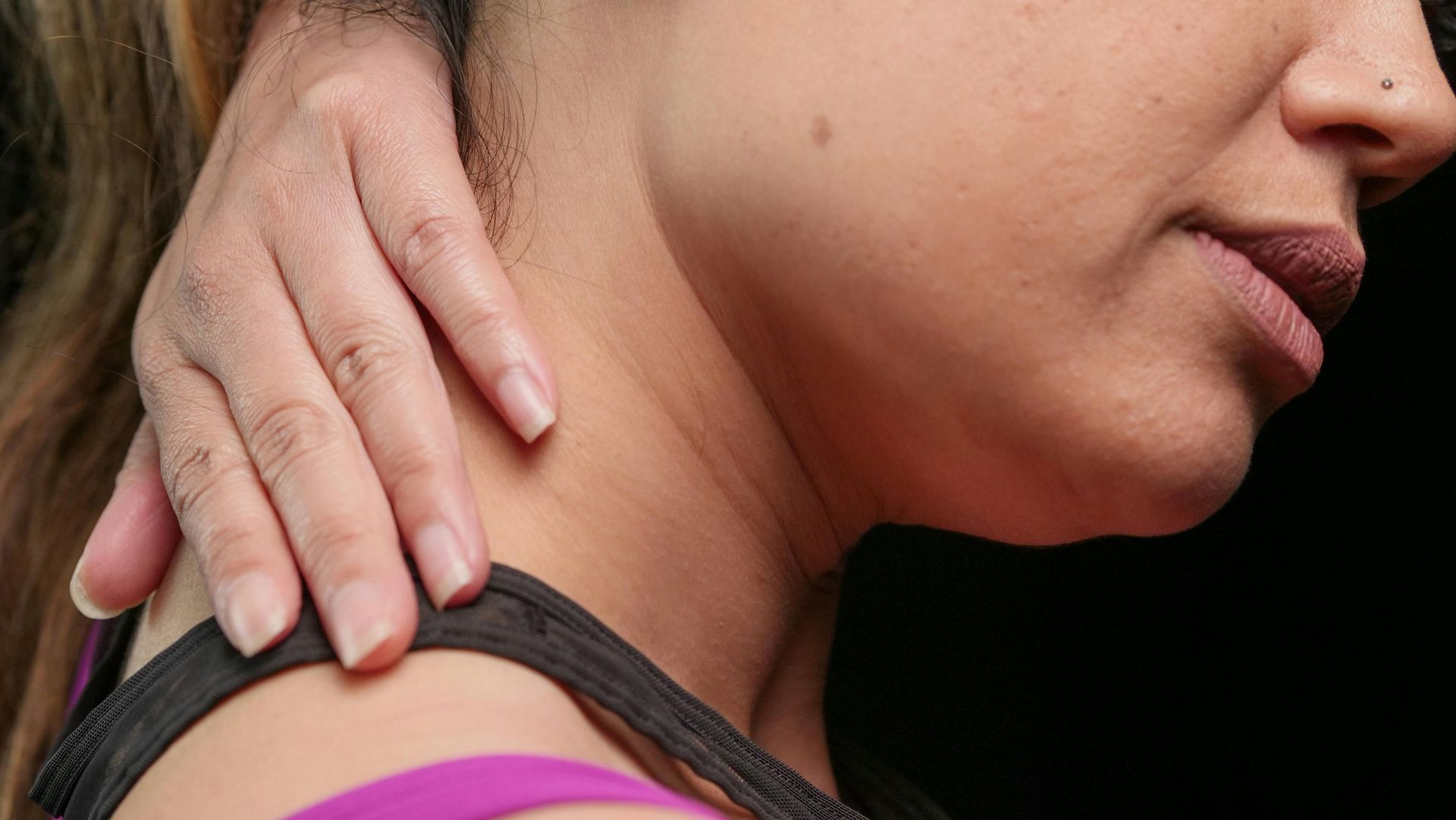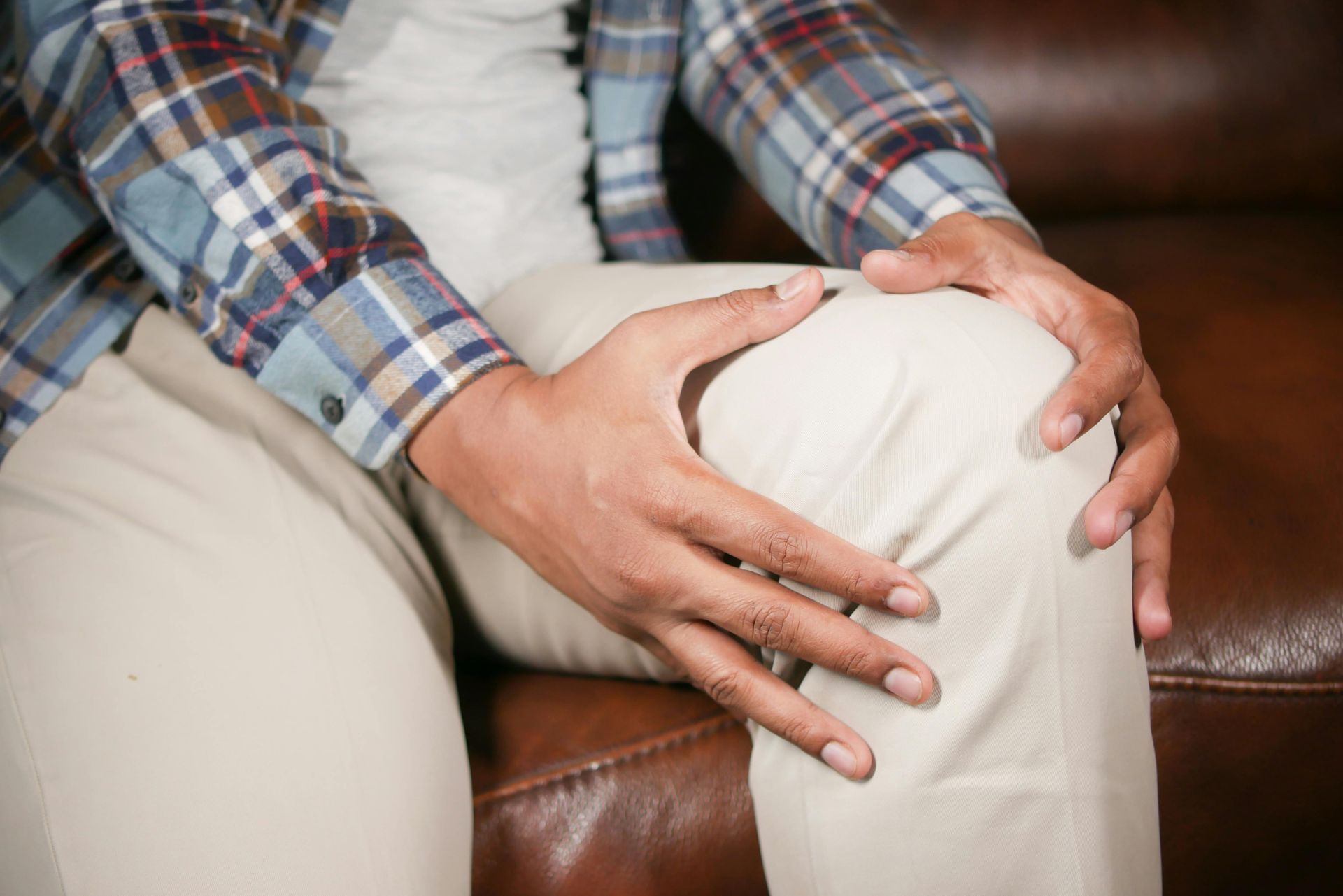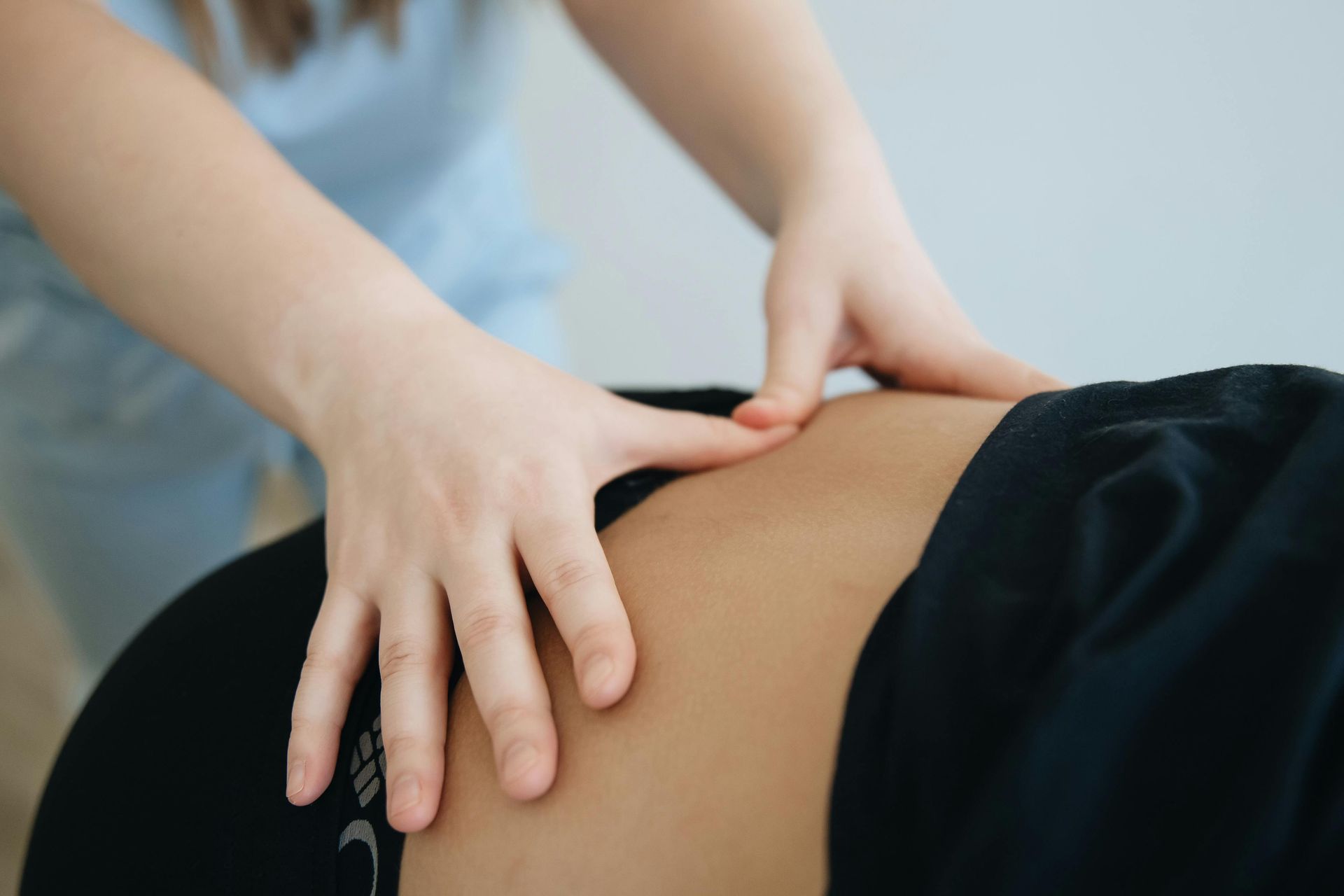Why Physical Therapy Can Help Knee Pain
Knee Pain Most Likely From Muscle Weakness

A person has knee pain and goes to their physician to establish what is causing the pain.
An x-ray and MRI are taken as standard protocol. Arthritis is identified; a meniscal tear perhaps, bone-on-bone. These are the typical diagnoses given for pain at the knee. Treatment protocols follow based on these diagnoses. A cortisone shot might be given. This is just a masking agent and clearly can do nothing to resolve a cause. It simply delays the inevitable need to establish what is causing the pain. Surgery is certainly a possible option for a meniscal tear or bone-on-bone.
These are the typical options provided by the medical establishment.
Now let's examine the diagnoses and understand why they are not valid and why the described treatment protocols are not valid. Let's start with that diagnosis of a meniscal tear creating pain at the knee. First it would be very important for you to know that a study identified that roughly 63% of people with knee pain have meniscal tears. Shockingly, the same studied identified that roughly 60% of people with no knee pain have meniscal tears. With that understanding it is difficult to correlate meniscal tears with pain. So how can you account for such a large number of people having meniscal tears and no pain. There is only one logical solution.
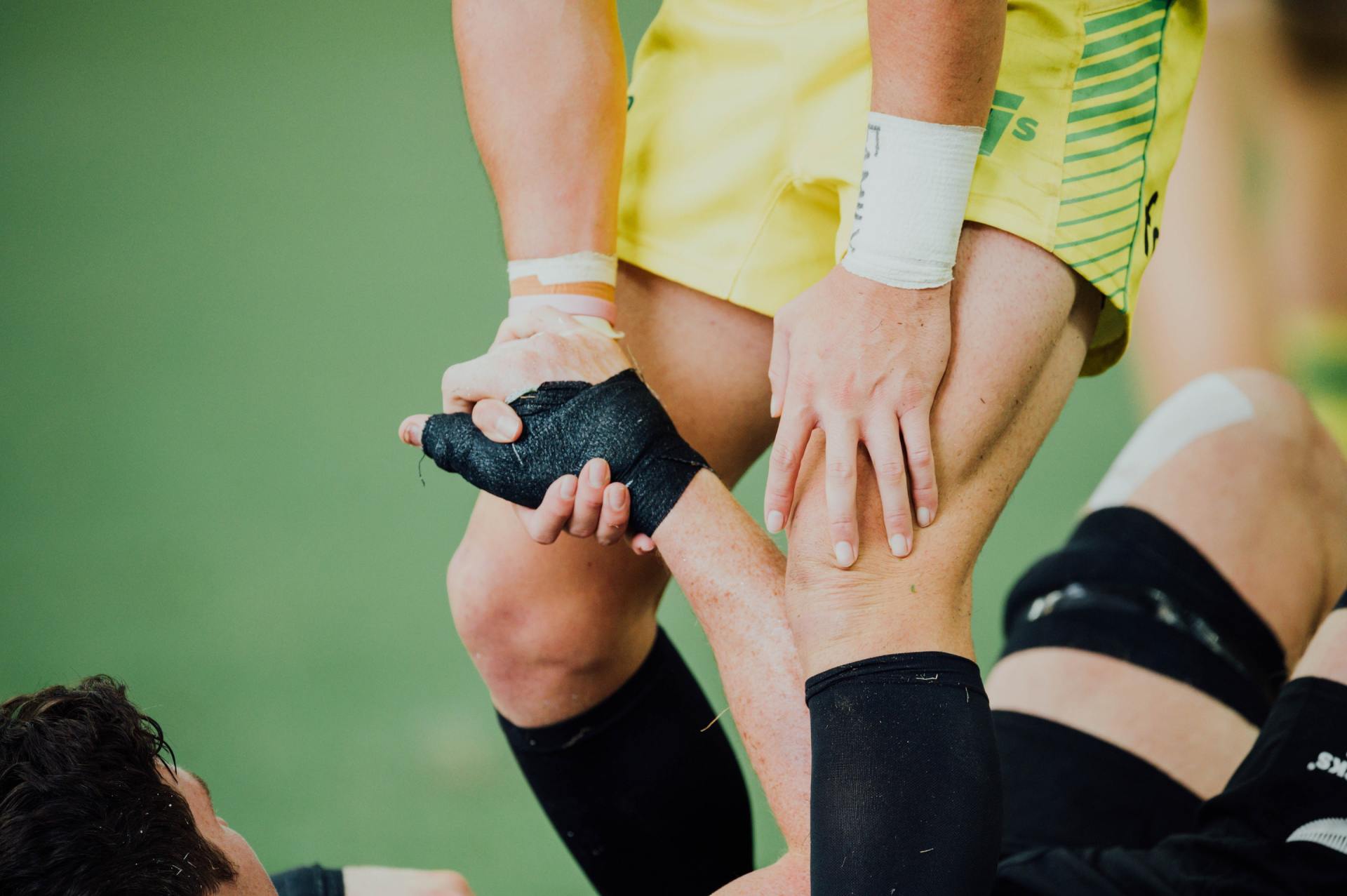
Regardless of whether you are getting the MRI when you have pain or don't have pain, the positive finding of a meniscal tear is one in which the tear is extremely slow in progression due to degeneration versus a specific traumatic event. The progression of the tear is so slow that it doesn't ignite a pain signal to identify the tear is occurring. Therefore, in most cases the finding of a mensical tear with knee pain is invalid and should not be taken to a legitimate method of identifying the cause of knee pain. Next, look at the diagnosis of bone-on-bone. This diagnosis implies that there is no more cartilage between the femur (thigh bone) and tibia (lower leg bone). Therefore they are bone-on-bone. What is false about this diagnosis is that if the joint is in fact bone-on-bone, there is no space for the bones to glide which is a key to allowing range of motion at the joint to occur. Therefore if you are bone-on-bone you should have no knee range of motion. In the vast majority of patients I have treated with this diagnosis, the person had almost full range of motion of the joint. Therefore they could not be bone-on-bone. They certainly have a decreased joint space but that is it. And that is certainly not a defining characteristic for identifying the cause of knee pain.
Again, studies have shown that almost as many people with no pain can be found to have degenerative joint disease as those with pain. So what is really causing pain at the knee in most cases?
The answer lies in a simply understanding that the position of bones at joints is not arbitrary. The position of bones at joints is determined by the pulls of the muscles that attach and pass across the joints. If there is muscle weakness or imbalance of the muscles at a joint, the joint surfaces will become misaligned. This can create irritation and pain. The key to resolving pain at most joints is to determine which muscles are weak or imbalanced creating the misalignment of the joint surfaces. In the case of the knee, there are three main muscular causes of pain. First, the front thigh (quad) muscle is to strong in relationship to the back thigh (hamstring) muscle. This causes the quads to shorten. In doing so, they cause increased upward force on the knee cap which causes it to be compressed excessively in the knee joint.
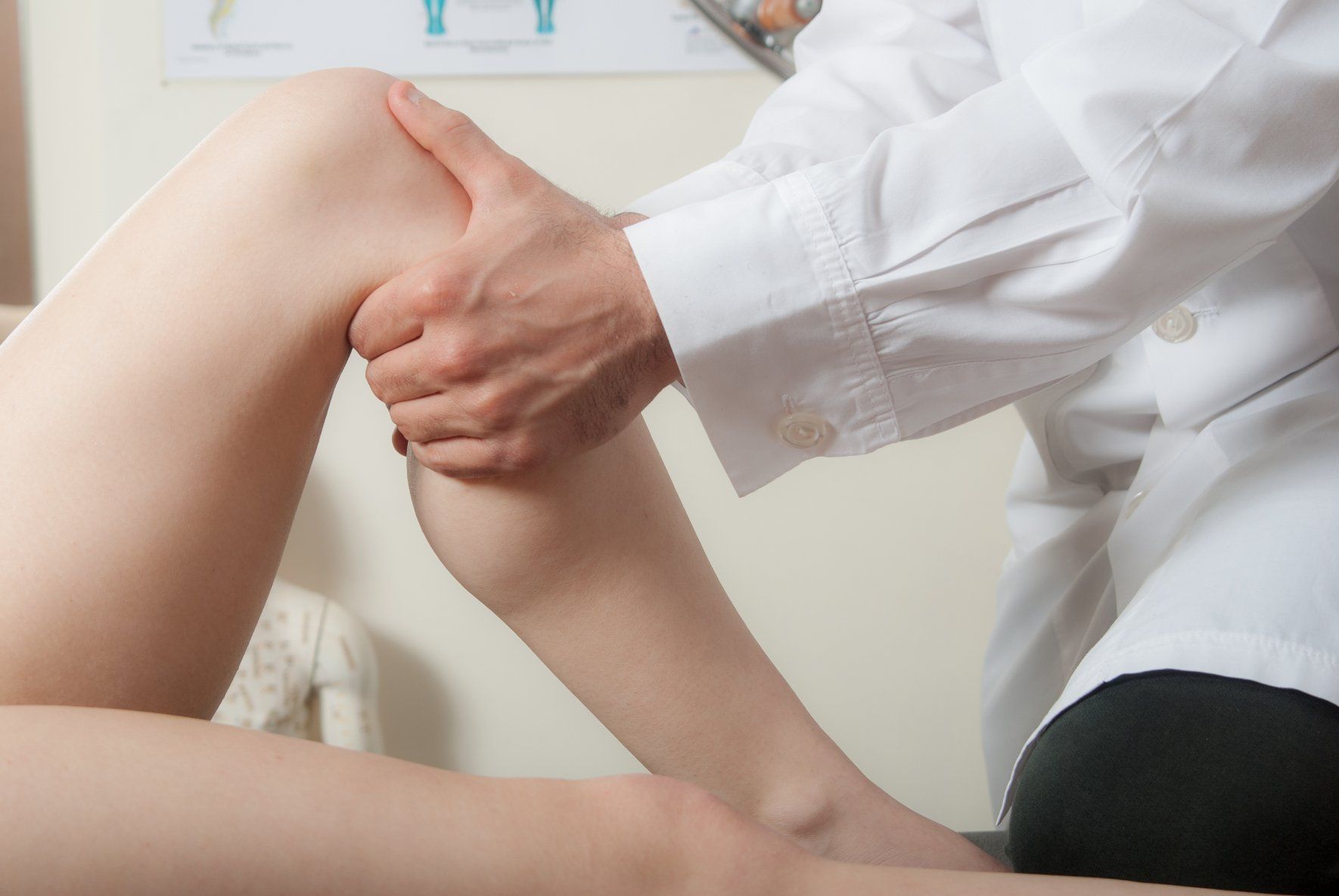
Resolution in this case comes from strengthening of the hamstrings and glute muscles and stretching of the quads.
Next, the quads could be strained causing them to weaken. This causes decreased tone on the knee cap. This allows the knee cap to rise in the knee joint. The knee cap begins to track more to the outside of the joint which causes it to contract the outside border of the knee creating pain. The key to resolution in this case is strengthening of the quad muscles. The third muscular cause of knee pain is straining of the ITB band. This is a band of connective tissue that attaches to the outside border of the knee cap. If this band becomes irritated, it will shorten and pull the knee cap out to the side. The knee cap can then impact the outside border of the knee joint and create pain. Resolution in this case comes from strengthening of the gluteus medius muscle. This is the hip muscle that works with the ITB to create support of the leg at the hip level. Strengthening of the gluteus medius will prevent the ITB from becoming irritated, shortening and creating misalignment of the knee cap.
I hope this gives you a better understanding of what the real potential causes of knee pain are. If you identify the cause of your knee pain as being muscular as I have proven in at least 90% of the cases I have treated, resolution of pain is just a couple of strengthening sessions away.
I am a doctor of physical therapy. I specialize in the resolution of pain and return of function. I have proven that the cause of most functional pain is muscle weakness or imbalance.
The key to identifying the cause of pain is to identify which tissue is creating the pain signal.
The pain signal is an indication that the tissue is in distress and requires intervention. In the majority of cases, the tissue creating the pain signal is muscle. Even when pain is experienced at a joint, the cause is muscle weakness or imbalance causing a misalignment of joint surfaces creating irritation and pain at the joint.


